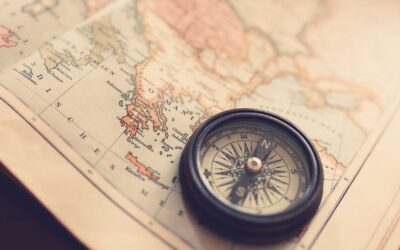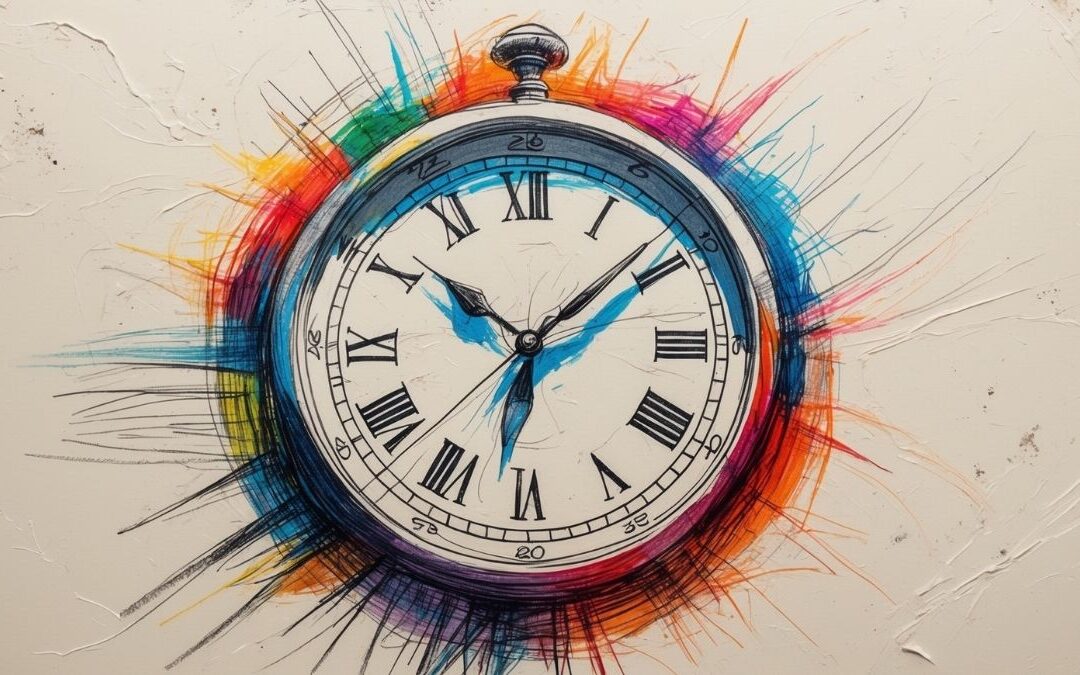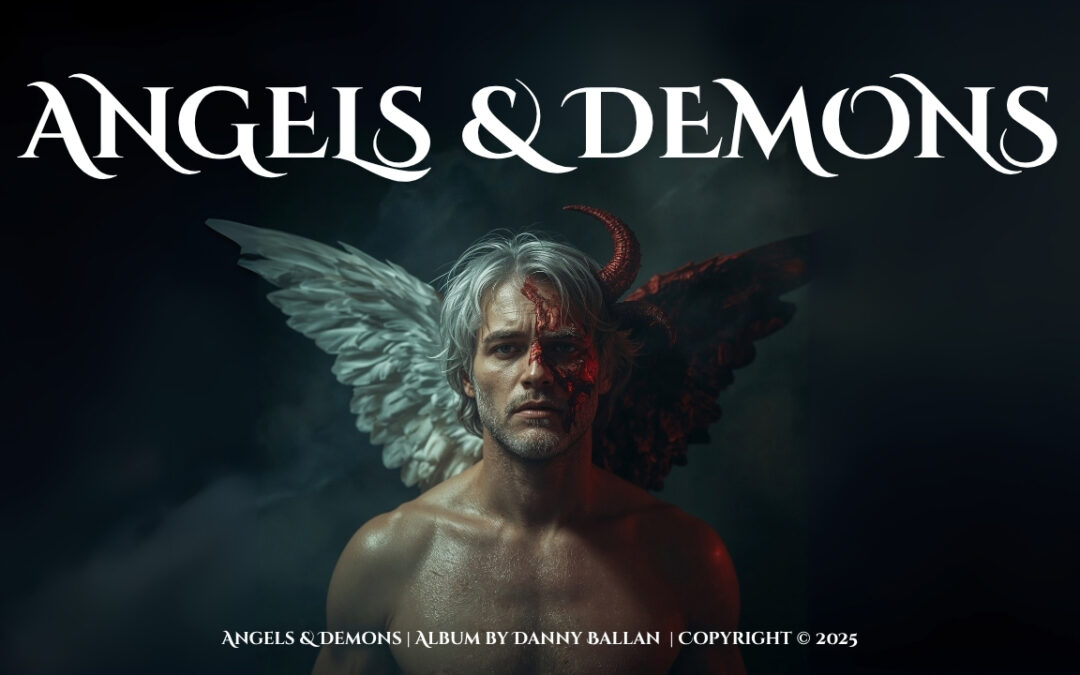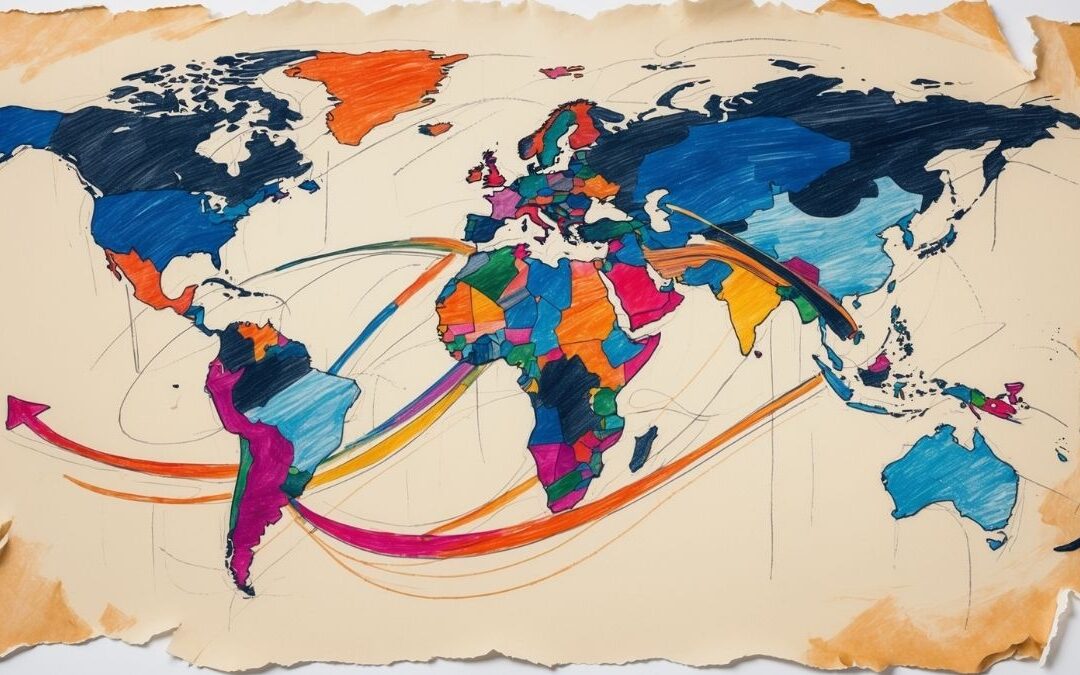Episode Transcript
This is your host Danny and this is series from English plus podcast.
Today we’re going to continue talking about our series 100 events that change the world. We talked about the first 30 events and today we’re going to talk about 10 more events from the 31st event to the 40th event. First we will talk about Surya Varma the second and his building Angkor Wat then we will talk about Markopolos travels and how he links Asia and Europe. Then we will talk about the Black Death and how he changed the world. Our 34th event is the beginning of modern printing. The 35th event is going to be the Mona Lisa and how it exemplifies the Renaissance. The 36th event is how slavery arrived in the new world. The 37th event is going to be about potatoes and the Columbian Exchange. Then we will talk about Martin Luther and how he launches re formation. Then we will talk about Copernicus and his introduction of the heliocentric solar system. And finally, we will talk about the 40th event that changed the world from the series where we will talk about 100 events and that is the discovery and rediscovery of pulmonary circulation. So are you interested? Are you intrigued yet? Join me in this episode, and we will learn about these 10 events.
So let’s start with the very first event for today’s episode. And that is the building of Angkor Wat that happened in 1150. Between the ninth and 15th centuries, the Hindu Buddhist Khmer Empire reigned across South East Asia stretching from modern day Laos, Thailand, Vietnam and Cambodia. It was an anchor located on Lake told SAP in present day Cambodia that King suryavarman the second who ruled from 1113 to 1150. Build Angkor Wat still the world’s largest religious monument stretching more than 240 miles. Hinduism began around 1500 bc when the indo Aryans peoples of ancient India and the Iranian descent combine their sacred teachings with the beliefs of the peoples of the Indus Valley whose territory they had recently occupied. Hindus worshiped many gods, the principal ones being Brahma, the creator Vishnu who preserves live and Shiva the destroyer of all evil and gore, what became the Empire’s principal religious complex, built to represent the Hindu cosmos and serve as a shrine to Vishnu. Anchor watts walls are covered in large scale carved depictions of Hindu epics. But despite its glorious dedication to the Hindu gods rival sack the commercial capital in 1177, causing the next commercial King jayavarman the eighth to look to Buddhism for divine protection. The complex may have been saved by this shift in religion, Buddhist monks took over the care of Angkor Wat after the comer abandoned it in the 15th century for their new capital in Phnom Penh. So that was the 31st event that changed the world. Let’s talk about the 32nd event that changed the world and this one has to do with Marco Polo.
In 1271, at just 17 Marco Polo who lived from 1254 to 1324, set off on an adventure that would make him legendary. He left Venice with his father Niccolo and his uncle MacPhail, who had previously been to the Far East. After four years and 7500 miles the trio reach Shang Zhou, the summer home of the Mongol ruler, Kublai Khan, Kublai Khan, who lived between 1215 to 1294, the grandson of Genghis Khan had come to power in 1260 in Mongolia, when Marco Polo arrived at Chengdu the Khan welcomed him as a friend. He spent seven years in Khan’s court, during which time he was sent on several diplomatic missions. When Marco Polo returned to Venice. 24 years later, he was apparently unrecognizable, dressed in rags and behaving in a foreign manner. Still, all of Venice rushed to hear Marcos tales of adventure. His book the description of the world, published in 13 105 years after his return, relates
Many fantastic stories. And here I will have to say that some of these stories are not true. But the book was translated into several European languages, allowing readers to travel by armchair to exotic places on the other side of the world. Marco also brought back practical information that immediately caught on such as using coal to fuel fires more significantly was the use of paper currency inspired by the Khan’s currency, which was invented in 105 ad and made of mulberry bark paper, paper currency would soon become the common currency of Europe. So that was about Marco Polo. What’s next, the 33rd event that changed the world, unfortunately, a sad one, and that is the Black Death.
The Black Death happened somewhere between 1346 to 1353. The first recorded outbreak of the bubonic plague occurred in the 1300s when the disease swept through China having its population from there, the contagion advanced West, arriving in Sicily in 1347, via rats from merchant ships. Two years later, it spread through Italy to France, Germany, England and Ireland. victims died within days, their lymph nodes swelled into buboes and their skin turned black. The Black Death wiped out entire villages. clergy were especially hard hit because they attended their flocks in rat infested homes. By 1351, nearly 24 million people, about 1/3 of Europe’s population had died of that plague. Many believe the plague was divine punishment for sins, physicians searched unsuccessfully for the cause of the disease. The Hunt for blame was most heinous in the murder of 1000s of European Jews who were accused of poisoning wells in an effort to eradicate Christianity. Many Jews fled East the rich culture of Eastern European jewelry is a direct result of the Black Death. Previous plagues had been followed by baby boomers that restored the population within a decade or two, the Black Death was different. The loss of life spiraled into a severe labor shortage and economic depression. It took 150 years for Europe’s population to recover dealing medieval feudalism a fatal blow. So that was the 33rd event that changed the world. Let’s move on to talk about the 34th event that changed the world and that’s the beginning of modern printing.
That happened in 1455. As early as 1700 BC, Minoans in Crete were impressing syllabic characters into clay. Some 2000 years later, the Chinese had invented pulp based paper, and by the sixth century were using wooden printing blocks. It wasn’t until 1455 that the modern printing press was invented. German inventor Johann Gutenberg, who lived from 1398 to 1468. altered a wine press so the machines heavy screw could press a printing block on a sheet of paper. To produce enough type he devised a punch stamp mold that could cut precise letters on mass and new metal alloy for the type and an oil based ink completed his system. Using his printing press to create his 42 line Bible in 1455. Gutenberg changed the course of history, books and newspapers could be had fairly cheaply inspiring the middle class to learn to read, writers published in the vernacular rather than Latin strengthening the diverse Romance languages in Europe. The method that Gutenberg pioneered remained largely unchanged until the 20th century. His printing press capable of producing about 240 pages per hour endured until the Industrial Revolution when steam powered presses began printing more than 1000 pages per hour. Today, digital technology and ebooks have overshadowed the printing press. Yet paper shows no sign of disappearing nearly 70% of book buyers read print books in 2013. And now for the next event that changed the world and that is the Mona Lisa, and how it exemplifies the Renaissance.
from roughly 1503 to 1506, Italian artists Leonardo da Vinci, who lived from 1450 to 250 19, painted the Mona Lisa, one of the world’s most famous works of art. It can be seen today at the Louvre in Paris. He used principles of perspective
demand for shortening that Italian masters had codified in the previous centuries to make the three dimensional painting possible. Leonardo continues to be revered not just for this iconic painting and sculptures, but also because he was Italy’s consummate uomo oni Versace, the complete man and he symbolizes the Renaissance period from 1300 to 1700. like no other human being, the people of the Renaissance perpetuated the idea that Europe experienced a dramatic rebirth in the 14th century. They espouse the study of human nature and revived classical learning, which was an intellectual movement known as humanism. And that led to the eras art, architecture, science, theology, and social thought. a painter and inventor Leonardo, who had an indefatigable curiosity about all spheres of science was fueled by the Renaissance mindset that humans could master their universe. Through Classical Studies, experimentation, and visual observation. The genius Leonardo consistently expanded the breadth of human knowledge is famously copius notebooks display sketches for inventions like flying mechanisms, parachutes and machine guns, ideas hundreds of years ahead of their time, and now for the next event. And that is also not a happy event when slavery arrives in the new world.
Then happened in 1519. Now, slavery existed in Egypt as early as 6800 bc and by the beginning of the 14th century, Europeans began enslaving Africans, the transatlantic slave trade can be traced to about 1519 when the first slave ship likely arrived in Puerto Rico after sailing directly from West Africa, with this ship of force had begun that would in voluntarily move more than 10 million people from their native lands. A century later, in 16 1920, Africans arrived in Jamestown, Virginia forced to work as indentured servants or slaves, while Spain approved using enslaved Africans in the Americas in 1501. It was Portugal and England that transported 75% of slaves to the new world, the so called Golden Triangle goods traveled from Europe to Africa, slaves were carried from Africa to the Americas, and sugar, rum and other colonial products were shipped back to Europe. This so called Golden Triangle was a complex commercial interchange between the old and new worlds that we enforced slavery. For the slaves. The journey across the Atlantic, known as the Middle Passage was horrendous, with as many as 20% of them dying in transit as a result of rampant disease and dreadful conditions aboard ship. new scholarship also suggests that slaves would stage a mutiny on one out of every 10 voyages. By the late 18th century, the slave trade had become a major factor in the British economy even as abolishing has fervor swept the country it took until 1807 for the slave trade to be abolished in British colonies making it illegal for ships to carry slaves. The abolitionist movement continued until Parliament passed the 1833 abolition of slavery Act, the United States also banned the importation of slaves in 1808. Those slaves continued to be bought and sold by slave owners within the country. abolished artists who were strongly influenced by the Society of Friends or Quakers campaigned against slavery starting in the 1830s. Some abolish artists, including Harriet Tubman, who was herself an escaped slave were active in the Underground Railroad, a network of secret routes and safe houses used by slaves to get to free States and Canada. Frederick Douglass memoir my bondage and my freedom and Harriet Beecher stows novel Uncle Tom’s Cabin convinced many that slavery was wrong. In 1863, at the height of the Civil War, President Lincoln issued the Emancipation Proclamation which freed slaves in the Confederacy, they would not all be free until the Union victory in 1865. But the proclamations moral and political force this you waited the British from entering the war on the side of the south and allowed 1000s of black soldiers to join the Union Army. Yet emancipation did not end discrimination against blacks in the United States. In 1909. After race riots resulted in lynching and the destruction of black owned property, a group of white and black reformers formed
The NAACP to fight for civil rights in the 1950s. The fight became a national movement under the leadership of figures like Martin Luther King Jr, Malcolm X, Rosa Parks and Thurgood Marshall, President Lyndon B. Johnson signed the Civil Rights Act in 1964. outlawing segregation based on race, creed, national origin or sex, the Voting Rights Act followed in 1965. And the Fair Housing Act in 1968 100 years after slavery ended, the nation pushed closer to equal treatment for all. And now let’s talk about the next event that changed the world. And that is potatoes and the Columbian Exchange that’s coming next.
That happened around 1530. Despite its strong cultural ties with Ireland in the popular imagination today, the Spanish first discovered the potato while exploring an abandoned Inca village. They found maize beans and then unidentified bland product the potato which they took to be some sort of truffle. Soon after the Spanish conquistador Francisco Pizarro conquered the Inca in 1532 potatoes began to make their way on board ships to Europe. They were grown by Basques in northern Spain after 1600. Eventually, the potato travelled through Italy to Northern Europe. The Columbian Exchange, the term for the transfer of species between the new world and Old World shaped global diet patterns and outlasted all the riches taken by the Spanish Empire. The exchange of foodstuffs also changed human history as illustrated by the simple potato. Some 300 years after its arrival, a mysterious potato blight appeared in Ireland where the potato had become a dietary staple, the fungus destroyed the leaves and roots of the potato plant ruining the crop for four consecutive years. During the next decade, more than 750,000 Irish died from famine and 2 million left their homeland for Great Britain, Canada and the United States. The blight struck other Northern European countries such as Norway, also leading to famine and increased emigration. So you might think that the potato didn’t do a lot, except that we love french fries now, but it did a lot and it changed the history of the world. And now for the next event that changed the history of the world, and that concerns Martin Luther and his re formation.
In October 1517, a Catholic theologian named Martin Luther who lived from 1483 to 1546, wrote a letter to his Archbishop listing 95 theses critical of church practices. In particular, he objected to the granting of indulgences. And that means being the church for forgiveness of sinful acts, even those not yet committed. The theses soon became public. And according to some, Luther nailed his theses to the door of All Saints Church in Wittenberg in modern day Germany, Luther had wanted to start a debate about church corruption and authority. Instead, he ignited a religious revolt, he articulated the idea of justification by faith alone, were through faith and by the grace of God, humans achieve salvation reformers simplified doctrines and rituals their church leaders preached from the Bible and services were conducted in the local languages, not in Latin. Protestants were encouraged to read the scriptures themselves. Luther completed his German translation of the Bible in 1534. Within 50 years, Lutheranism and other dissenting sects like Calvinism and Presbyterianism has swept through Northern Europe in a movement that is now known as the Protestant Reformation, which lasted until 1648. To counter protest, anism, the Catholic Church reinvigorated the Inquisition, the re formation unintentionally helped usher in a century of religious warfare, which raged across Europe from 1545 to 1650. And that brings me to the next event that changed the history of the world and that concerns Copernicus and his introduction of the heliocentric solar system.
The Polish astronomer and physician Nicolaus Copernicus, who lived from 1473 to 1543, placed the sun in the center of the solar system in his 1543 work on the revolution of heavenly bodies, overturning the Ptolemaic model that had shaped people’s ideas.
of the unmoving earth for 1400 years. His idea recall the work of the Greek astronomer Eris darkus, who suggested around 280 bc that the sun was the center of the universe. Copernicus went further did using that the Earth rotates on its axis and attempting to work out the mathematics of a heliocentric Universe by mapping planetary orbits around the sun. He had circulated his revolutionary idea in 1514, but only in a small pamphlet distributed among scholars concerned about how the church would receive his work. Copernicus delayed its publication when it was finally published in 1543. It contained a dedication to Pope Paul the third at the time, his ideas were considered mathematical in spirit, but the Catholic Church reacted negatively for bidding the book in 1616 Copernicus his most famous work came out the same year as his death. It took almost nine more decades before Galileo proved Copernicus his theory, considered the founder of modern astronomy, Copernicus and his work helped launch the scientific revolution and his system changed how people saw their place in the world. And now we come to the last event for this episode, the 40th event that changed the world and that is the discovery and rediscovery of pulmonary circulation.
In the 13th century, the Egyptian physician had been the feasts became the first person to understand pulmonary circulation. He published his understanding of circulation in commentary on anatomy in avocent. us cannon but his knowledge failed to reach Europe. three centuries later, in 1553, Spanish doctor Mikhail servetus proposed a theory of pulmonary circulation. It was never shared, though, because the Catholic Church burned him at the stake for his heretical views. Finally, six years later, Italian anatomist Matteo re Aldo Colombo would rediscover the idea which he published in 1559. In his anatomy text in his anatomy text on anatomy called matters, Colombo understood the motions of the heart, how it contracts and pushes blood into the arteries. He is recognized for his understanding of how blood circulates from the hearts right ventricle to the lungs, then returns to the hearts left atrium a major step toward understanding general circulation as we know it today. So there were actually three physicians that discovered Palminteri circulation, but for different reasons. It was not until 1559 that this discovery, soul light and other physicians around the world learned about it. And with that, we come to the end of today’s episode. Don’t forget next week, we’re going to continue our series 100 events that change the world and we will talk about events 41 to 50 and a lot of interesting things you will learn about in next week’s episode, so stay tuned and we will continue the series next week. But don’t forget that we have other episodes and other series going on in English plus, so check them out. This is your host Danny I would like to thank you very much for listening to another episode from English plus podcast. I will see you next time.










0 Comments